Related Research Articles

Hiram Warren Johnson was an American attorney and politician who served as the 23rd governor of California from 1911 to 1917. Johnson achieved national prominence in the early 20th century. He was elected in 1916 by the state legislature as the United States Senator from California, where he was repeatedly re-elected and served until 1945.

Clement Calhoun Young was an American teacher and politician who was affiliated with the original Progressive Party and later the Republican Party. He was elected to five consecutive terms in the California State Assembly, serving from 1909 to 1919, then as the 28th lieutenant governor of California, holding that office from 1919 to 1927. In the 1926 general election, he was elected in a landslide victory as the 26th governor of California and served from 1927 to 1931. Young is considered to have been one of the last governors from the Progressive movement.
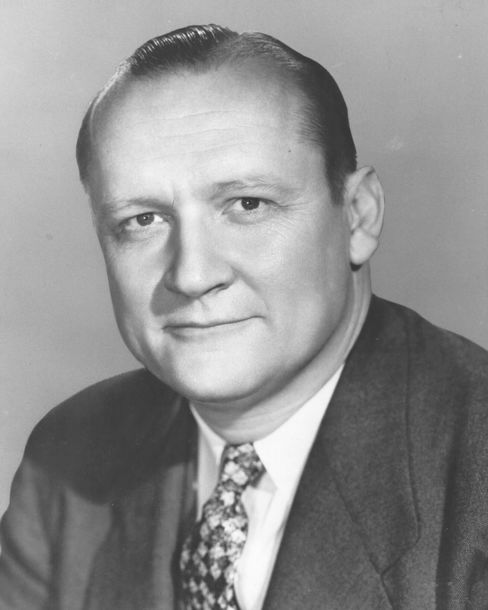
William Fife Knowland was an American politician and newspaper publisher. A member of the Republican Party, he served as a United States Senator from California from 1945 to 1959. He was Senate Majority Leader from August 1953 to January 1955 after the death of Robert A. Taft, a position he briefly regained from November 1956 to January 1957.
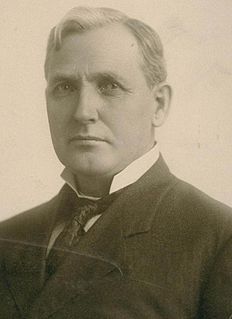
James Norris Gillett was an American lawyer and politician. A Republican involved in federal and state politics, Gillett was elected both a member of the U.S. House of Representatives from California from March 4, 1903, to November 4, 1906, and as the 22nd governor of California from January 9, 1907, to January 3, 1911.
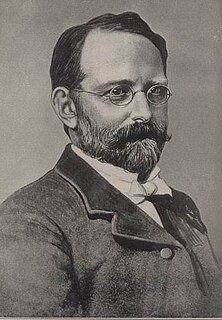
George Cooper Pardee was an American doctor of medicine and politician. As the 21st Governor of California, holding office from January 7, 1903, to January 9, 1907, Pardee was the second native-born Californian to assume the governorship, after Romualdo Pacheco, and the first governor born in California after statehood.
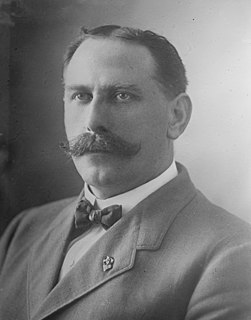
Patrick Henry McCarthy, generally known as P. H. McCarthy and sometimes, more jocularly, as "Pinhead", was an influential labor leader in San Francisco and the 29th Mayor of the City from 1910 to 1912. Born in County Limerick, Ireland, he apprenticed as a carpenter in Ireland before emigrating to the United States in 1880. He moved to San Francisco in 1886, where he rose through the ranks to become president of Carpenters Local 22, then President of the Building Trades Council in 1896.
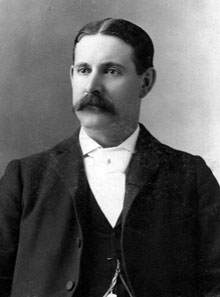
Tirey Lafayette Ford was an American lawyer and Republican politician who served as a California State Senator and the 18th Attorney-General of California. He acted as General Counsel for the United Railroads in San Francisco.

Eugene Edward Schmitz, often referenced as "Handsome Gene" Schmitz, was an American musician and politician, the 26th mayor of San Francisco (1902-7), who was in office during the 1906 San Francisco earthquake.

Cottrell Laurence Dellums was an American labor activist and one of the organizers and leaders of the Brotherhood of Sleeping Car Porters.
Charles Boxton served as the 27th mayor of San Francisco for seven days, from July 9 to July 16, 1907.

Joseph Russell Knowland was an American politician and newspaper publisher. He served as a member of the United States House of Representatives from California and was owner, editor and publisher of the Oakland Tribune. He was the father of United States Senator William F. Knowland.

Abraham Ruef was an American lawyer and politician. He gained notoriety as the corrupt political boss behind the administration of Mayor Eugene Schmitz of San Francisco during the period before and after the 1906 San Francisco earthquake.

This Committee of Fifty, sometimes referred to as Committee of Safety, Citizens' Committee of Fifty or Relief and Restoration Committee of Law and Order, was called into existence by Mayor Eugene Schmitz during the 1906 San Francisco earthquake. The Mayor invited civic leaders, entrepreneurs, newspaper men and politicians—but none of the members of the San Francisco Board of Supervisors—to participate in this committee in whose hands the civil administration of San Francisco would rest.

Francis Joseph "Frank" Heney was a lawyer, judge, and politician. Heney is known for killing an opposing plaintiff in self-defense and for being shot in the head by a prospective juror during the San Francisco graft trials. In 1891, while an attorney in Tucson, Arizona Territory, he defended the abused wife of John C. Handy. Handy attacked Heney, who shot and killed Handy. Heney later served as Attorney General of the Arizona Territory between 1893 and 1895. He was the chief prosecutor of the Oregon Land Fraud scandal from 1904 to 1910 and served as US District Attorney for the District of Oregon, from January 9 to December 3, 1905. He prosecuted corrupt San Francisco politicians, from 1906 to 1908.
The Union Labor Party was a San Francisco, California working class political party of the first decade of the 20th century. The organization, which endorsed the doctrine of nativism, rose to prominence in both the labor movement and urban politics in the years after 1901, electing its nominee as Mayor of San Francisco in 1909.

Aurelia Isabel Henry Reinhardt was an American educator, activist, and prominent member and leader of numerous organizations. She completed her undergraduate studies at the University of California, Berkeley, her doctoral dissertation at Yale, and studied as a fellow at Oxford. After teaching at the University of Idaho, the Lewiston State Normal School, and with the Extension Division of the University of California, Reinhardt was elected president of Mills College in 1916, and held the position until 1943, making her the longest serving president in the history of the school.
William M. Malone (1900–1981) chaired the California Democratic Party during and after World War II. He was the most powerful Democratic Party leader of San Francisco during the later Roosevelt and Truman Administrations.

Edgar Stow Wheelan, who signed his work Ed Wheelan, was an American cartoonist best known for his comic strip Minute Movies, satirizing silent films, and his comic book Fat and Slat (EC), published by DC Comics. He was one of the earliest writer-artists to introduce daily narrative continuity and cinematic techniques to comic strips.
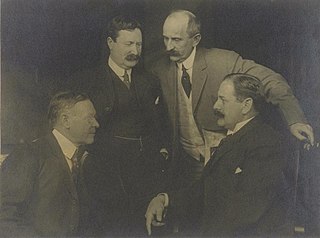
The San Francisco graft trials were a series of attempts from 1905 to 1908 to prosecute members of the San Francisco Board of Supervisors, San Francisco Mayor Eugene Schmitz, attorney Abe Ruef, who were receiving bribes, and business owners who were paying the bribes. Political boss and attorney Ruef was at the center of the corruption, acting as attorney to Mayor Eugene Schmitz. He approved all contracts and received hundreds of thousands of dollars in payment from business owners, keeping a portion for himself and distributing the remainder to the Mayor and members of the Board of Supervisors.

Albertine Randall Wheelan was an American illustrator, cartoonist, and costume designer.
References
- ↑ Boss Ruef's San Francisco: Story of the Union Labor Party, Big Business and the Graft Prosecution by Walton Bean. University of California Press. 1952. p. 60. ISBN 0520000935.
- ↑ "The Northwestern Miller". Miller Publishing Company. 17 June 2018 – via Google Books.
- ↑ Wheelan, Peter. "Political Graveyard".
- ↑ "California Digital Newspaper Collection". San Francisco Call.
- ↑ "[McClure's Military Academy, Oakland]". Calisphere.
- 1 2 3 4 5 "In Memoriam: Fairfax Henry Wheelan, 1856-1915". 1915.
- ↑ "The Berkeley beacon" . Retrieved 2018-05-23.
- ↑ Waterman, S.D. (1919). HISTORY OF THE BERKELEY SCHOOLS. Professional Press.
- ↑ Soulé, Frank; Gihon, John H.; Nisbet, James; Nisbet, Jim (1855). "The Annals of San Francisco".
- ↑ "Pacific Coast History Papers Committee".
- ↑ Annual Report of the Commissioner of Patents. Washington D.C.: Government Printing Office. 1893.
- ↑ "Albertine Randall".
- ↑ Wheelan, Fairfax (October 6, 1904). "Wheelan Tells of Rough Work at Polls". The San Francisco Call.
- ↑ "Oakland Tribune from Oakland, California on December 6, 1905 · Page 13". Newspapers.com. Retrieved 2018-05-23.
- ↑ Older, Fremont (1919). My Own Story. Call Publishing Company.
wheelan.
- 1 2 Bean, Walton (1952). Boss Ruef's San Francisco: The Story of the Union Labor Party, Big Business, and the Graft Prosecution . University of California Press. ISBN 9780520000940.
blunt.
- ↑ "No Japs Employed". San Francisco Chronicle. 1905-08-05. Retrieved 11 January 2017.
- ↑ Leonard, John William; Marquis, Albert Nelson (1906). "Who's Who in America Vol 4".
- ↑ Francisco, Chit-Chat Club, San (1892). Annual Meeting of the Chit-Chat Club. Chit-Chat Club.
- ↑ "Archaeological Society of San Francisco".
- ↑ "Fairfax Wheelan Memorial".